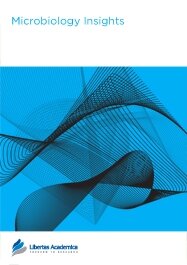

Publication Date: 09 Apr 2013
Type: Original Research
Journal: Microbiology Insights
Citation: Microbiology Insights 2013:6 17-28
doi: 10.4137/MBI.S10402

Response surface methodology (RSM) was used to optimize the cultivation conditions for the production of phytase by recombinant Escherichia coli DH5α. The optimum predicted cultivation conditions for phytase production were at 3 hours seed age, a 2.5% inoculum level, an L-arabinose concentration of 0.20%, a cell concentration of 0.3 (as measured at 600 nm) and 17 hours post-induction time with a predicted phytase activity of 4194.45 U/mL. The model was validated and the results showed no significant difference between the experimental and the predicted phytase activity (P = 0.305). Under optimum cultivation conditions, the phytase activity of the recombinant E. coli DH5α was 364 times higher compared to the phytase activity of the wild-type producer, Enterobacter sakazakii ASUIA279. Hence, optimization of the cultivation conditions using RSM positively increased phytase production from recombinant E. coli DH5α.
PDF (1.04 MB PDF FORMAT)
RIS citation (ENDNOTE, REFERENCE MANAGER, PROCITE, REFWORKS)
BibTex citation (BIBDESK, LATEX)
XML
PMC HTML

We made our first submission to Microbiology Insights. We are very impressed by the helpful guidance during paper submission, the prompt processing (less than two weeks to editorial decision), and the flexibility of the editor-in-chief. We believe that Microbiology Insights journal is a unique platform that offer a high visibility for microbiologists, particularly in resource-poor settings.
Facebook Google+ Twitter
Pinterest Tumblr YouTube